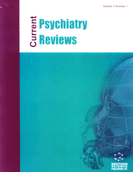Abstract
More than three decades ago, bright light was found to be able to suppress melatonin production in humans, a finding which quickly led to identification of seasonal affective disorder (SAD) and its treatment with light. However, current thinking supports a phase shift hypothesis (PSH), according to which SAD is a disorder primarily of phasedelayed circadian misalignment {best assessed by the time interval [or phase angle difference (PAD)]} between the dim light melatonin onset (DLMO) and the midpoint of the sleep bout. It has been heuristically useful to use PAD 6 (a time interval of six hours) as the “sweet spot” for SAD: most patients with SAD have phase-delayed circadian misalignment (that is, have PADs ≤ 6), which explains why bright light exposure scheduled at waketime is the optimal treatment for most patients with SAD. Low-dose melatonin taken in the afternoon/evening also provides a corrective phase advance and is therefore an alternative or “add-on” treatment for these patients. The other SAD patients appear to be phase advanced (with PADs > 6) and respond to evening light and morning melatonin. Other hypotheses have not stood the test of time, including the two-oscillator dawn/dusk model of the endogenous circadian pacemaker which has been at least heuristically useful in rodents. However, recent research on multiple oscillators in the SCN and brain, as well as in other tissues and organs, may yet yield a more refined understanding of circadian misalignment. The salivary home DLMO may soon be the first laboratory test for a psychiatric disorder.
Keywords: Bright light, circadian misalignment, depression, light/dark cycle, melatonin, phase-advanced, phase-delayed, sleep/wake cycle.
 31
31



